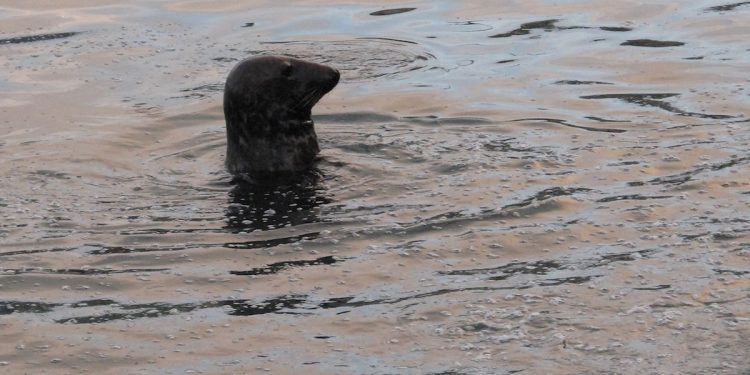The findings of acoustic seal deterrent trials undertaken in an inshore gill net fishery have been published by the Marine Management Organisation (MMO). Part of a wider study, the trials were led by ABPmer on behalf of Defra and the MMO, with the aim of improving understanding of how seals interact with English fisheries and to examine non-lethal measures to deter them from taking catches.
More than ninety fishermen responded to a survey about their experiences with seals. Following this data gathering exercise, ABPmer reviewed the different methods available to reduce seal depredation, including namely gear modifications, fishing tactics and non-lethal deterrents. The outcome of the review found that there were limited commercially-available non-lethal options for use in fisheries.
This led to trials being carried out using a prototype of the targeted acoustic startle device (ASD) developed by Genuswave, which triggers a startle response that causes a seal to move away from the sound.
It operates at a much lower sound dose in both volume and duration than other acoustic deterrents and a frequency range where seals’ hearing is more sensitive than other species. The ASD has no adverse impact on marine mammals such as dolphins and porpoises, and should be more effective in the long-term at deterring seals compared with other deterrent devices.
Two inshore boats from Torquay and Brixham were involved in the trials, each deploying two nets at a time, one as a control net fishing as normal and the other with one or more ASDs deployed nearby. Catches from each net were recorded, as well as the number of damaged fish in each net.
The trials found that the ASD increased the catch by an average of 74% compared to the net without the ASD, although due to technical difficulties deploying the prototype ASD at sea, there was a high variability in catches and the effectiveness of the ASD, with the modelled increase in catch ranging from 5% to 189%.
‘Although the trials experienced technical difficulties with deploying the prototype ASD at sea, overall the results show promise for it to be an effective seal deterrent,’ said ABPmer project manager Suzannah Walmsley.
‘This has already led the ASD developer to make the units more robust and to explore alternative ways of deploying the devices at sea. Additional work and testing is needed in other locations and fisheries before conclusive results can be drawn.’
The project was funded through the European Maritime Fisheries Fund and implemented by ABPmer in collaboration with the National Federation of Fishermen’s Organisations, and the trials benefited from support from the fishermen and the Devon & Severn Inshore Fisheries and Conservation Authority.









